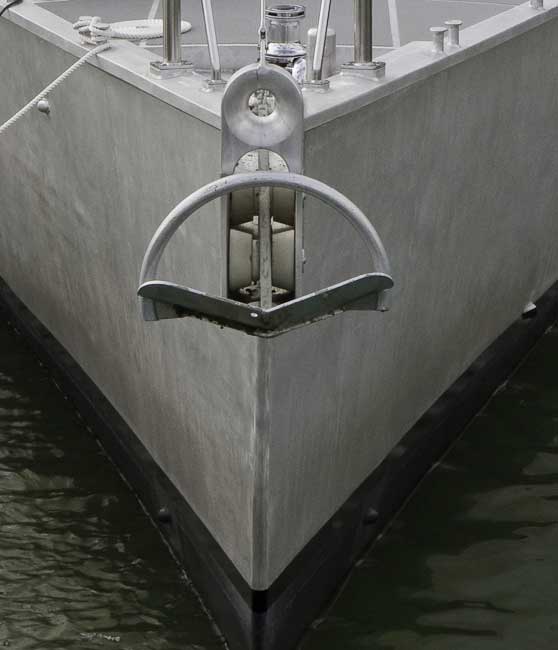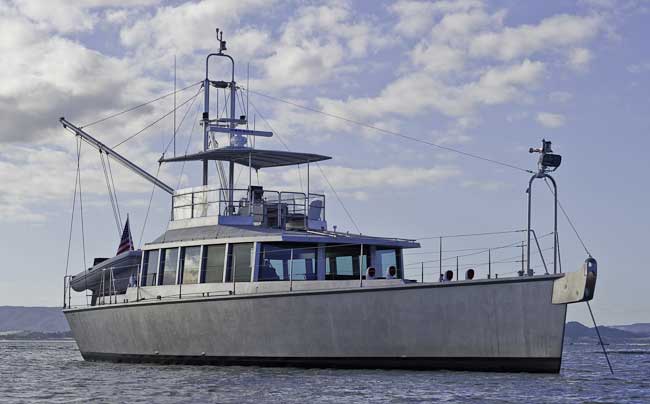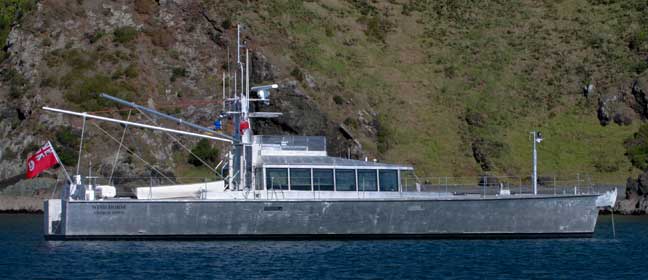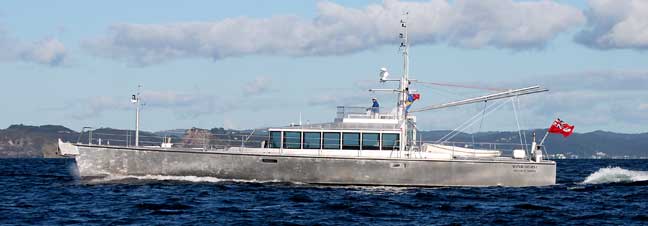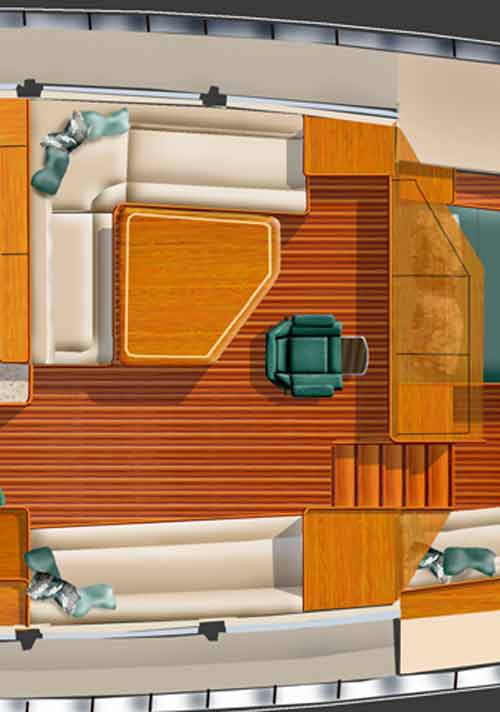The engine room is located in the aft 15 feet (4.6m) of the boat. Aft engine rooms offer many advantages.
Dashew Offshore
Forepeak & Anchoring System
Years ago we learned that there had to be a place onboard for ground tackle, sails, fenders, dock lines, awnings, etc.
FPB 64 – Hull Shape
As we alluded to in the introduction page to the FPB 64, coming up with a shorter hull shape that has comparable comfort and sea-keeping abilities to the FPB 83 has taken us a while.
FPB 64 – Interior Storage
The FPB 64 is unique in its ability to assimilate a huge amount of cruising “stuff” yet keep it well organized so that you can find things when needed.
FPB 64 Interior Layout

If you have followed the development of the FPB 83, the layout of the FPB 64 will look familiar.
Aft Deck Lounging Area
We have been working on integrating a second lounging area into the aft deck, where you are in the lee of the house at anchor.
Awnings
Awnings are a critical part of comfortable cruising in the tropics as well as in cooler environments.
FPB 64 – Second Series Changes & Options
With the first series of FPB 64s nearing completion we have been hard at work on fine tuning what is arguably close to the ultimate cruising tool.
Designing for Comfort at Sea
“Even the fine details on board make Wind Horse a pinnacle of cruising dedication, like…the 4 in fiddles on every flat surface in the saloon and galley, and the fact that no matter where you are, a handhold or two will be close by.”
–Motor Boat & Yachting
What we’ve found over the years is that even though a small percentage of our time is actually spent at sea, if this time is not comfortable, then the boats tend to sit rather than move on to new locations.
Glazing
“The panes of glass in the steering house are 18 mm thick…”
–Motor Boat & Yachting
It’s not easy to make the structure strong enough for a rollover, or being dropped off a wave – but it’s a cinch compared with getting the window system to stand up to these loads.
Maintaining an Aluminum Hull
“Steve and Linda, prefer natural aluminum because it doesn’t demand the incessant maintenance of a painted boat. In fact, the aluminum oxide that eventually coats the exterior is tougher than any paint.”
–Yachting Magazine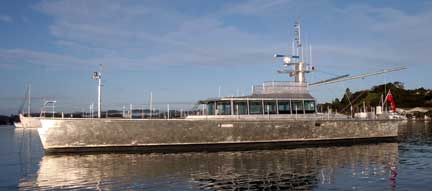
We’ve built about half our clients’ (custom) boats in aluminum, and half in fiberglass. During the material selection process, we’re always asked about the maintenance of both.
Painted or Bare Aluminum?
” Wind Horse is deliberately left unpainted and will take on a dull patina as it self-anodizes. This actually suits Skip and Linda. Apart from removing the need for maintenance, the boat has a low-key ‘workboat’, almost military look about her.”
–Sea Spray Magazine
We have been working through the paint or bare question with clients for twenty-plus years. There are many practical reasons for leaving the topside aluminum bare, but you also need to enjoy looking at the boat.
Hull & Deck Structure
“The key to this design goal was the ability to deal with heavy weather with a margin for operator error.”
–Bluewater Sailing Magazine
Engineering a boat is a mix of science, numbers, black art, and experience. You have to first establish a set of guidelines to use.
Pitching in Headseas
“Our photo boat – a Windy 42 Bora (and a very good sea boat) – is tossed around like a bath toy, but Wind horse just brushes through the crests with laughable ease.”
–Motor Boat & Yachting
Of all the comfort issues facing a passagemaking vessel – power or sail – how it deals with headseas has the biggest impact on crew comfort.
Design Objectives
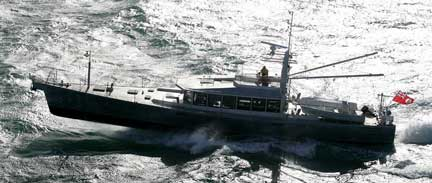
The most important part of the design process is defining just what it is we are trying to achieve.
The Importance of Speed
“With no serious penalty in speed, the boat just danced over or through the waves…”
–Bill Parlatore, Passagemaker Magazine
We’ve briefly mentioned the importance of the ability to maintain high average speeds. Let’s take a few minutes now and look at this subject in more detail. We’ll start with weather.
Press Coverage
 Yachting Magazine ,
Yachting Magazine ,
August 2010
“On Top of the World: Wind Horse rides the fjords of Svalbard to 90 degrees North.” Click here.
Saloon
The saloon is at the forward end of this raised area, adjacent to the galley and the office. We’ve got 7-foot (2.15m) settees on each side, plus room for two more folding chairs around the table.


